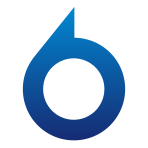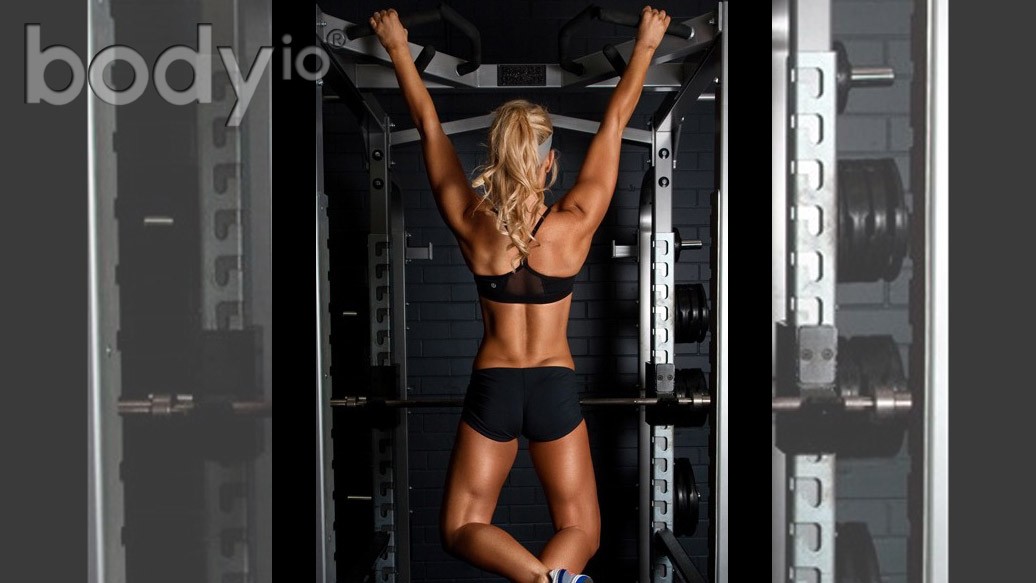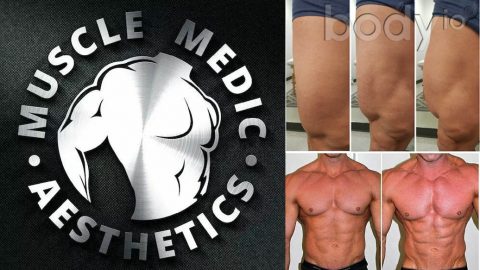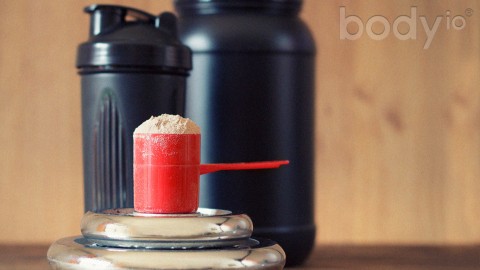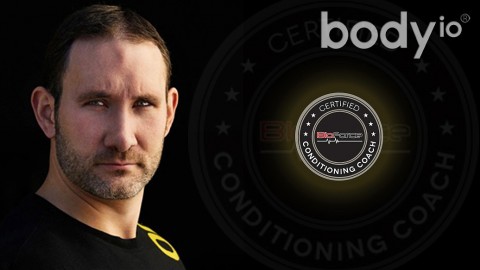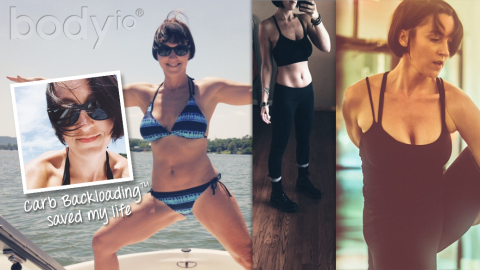From the archives:
Have you ever seen a piece of raw meat wrapped in string? You don’t need to spend time in a butcher shop to imprint this image on your consciousness. Instead, just look at the legions of “skinny-fat” girls wasting hours on all the cardio machines in your gym. When you’re skinny-fat, and you refuse to lift weights to give yourself some curves, that’s how your back looks. We see things we don’t want to see—including loads of back fat when you put a bra on.
What makes a woman’s back attractive? When people look at you from behind, what do you want them to see? To come up with the right answers here, we first have to think about what we find unattractive—the things we don’t want people to see. For my money, there’s nothing attractive whatsoever about a bony-looking back where your ribs are exposed and the whole world can see your spine. When you’ve got this look going on, you may as well hang a sign on your back that says you’ve stopped caring—and that you’ve never done a pulling exercise in your entire life.
What we want, then, is to find a happy medium between this skinny-fat look and that every-bit-as-unattractive bulky appearance. The way we can do this is to start building some curves in our backs. Most women, when I start talking about curves, automatically think of their hips, but the idea here is that lifting weights can give you attractive curves everywhere—even in your back and shoulders.
The Aesthetic We Want
Through lifting weights, we can apply curves to your shoulders, and we can apply them to your back—from the base of your neck all the way down to your glutes. Having these curves will give off the illusion—and remember, this is just an illusion—of being wider on top in proportion to your waist. I know this concept of “width” makes some of you hesitate a bit because that V-taper shape is straight out of the men’s bodybuilding playbook—but that’s not exactly what I’m getting at here.
I say this fifty times a day to my clients, and I’ll say it to you: When women lift weights, they get hot, attractive curves. That “wider” look in your back is simply another curve. It’s not bulk, it’s not chiseled muscle, and it’s exponentially more attractive than bone. All we’re talking about here is losing fat and building muscle—but not the muscle you’re thinking of. The kind we’re building here is sleek, slender, and tight—just the way you want it.
We want curves, from where your lats come in, through your spinal erectors, and down to the base of your spine. Our goal is to build muscle that stays tight—not “toned,” but tight—without showing any bacon rolls or bony bits protruding from your spine.
The Bag of Tricks
Changing Angles: Your back contains a lot of muscle, and we can train it in a variety of ways. I prefer a three-headed approach here. First, I’ll throw in a vertical pull, like chin-ups or lat pulldowns. Then, we’ll do some horizontal work, like inverted rows, bent-over rows, or single-arm dumbbell rows. Finally, I like to work my traps with moves like the Trap-3 lift or Powell raises for my rhomboids.
The Grips: It’s also important to spread out your loads by varying your grip. For example, a pronated (overhand grip) lat pulldown will have a slightly different effect on your lat muscles than a supinated (underhand) or semi-supinated (neutral) lat pulldown. I’ll also vary the width of my hands—narrow and wide—and the thickness of the bar I’m using (skinny and fat). These adjustments work slightly different muscle fibers, helping you attain a more well-rounded physique.
Tempo: In the workout chart below, you’ll see tempo notations like “2010” and “4010.” Using a lat pulldown as an example, here’s what this means:
4: Take four seconds to perform the negative portion of the lift. This is how long it should take you to let the bar come back to the top position with your arms fully extended over your head.
0: No pause at the top of the lift.
1: Take one second to pull the bar down in the concentric portion of the lift, meaning you’ll do these explosively.
0: No pause at the bottom of the lift.
I’m a huge fan of using tempo for a number of reasons. When I first started lifting weights—and I think we all go through this—the goal was to use the heaviest weight I could for three sets of ten reps. As I gained more training experience, these reps naturally started getting faster and faster, which isn’t the most effective technique for building muscle.
This introduces the concept of time under tension. When you can control the amount of time you’re spending under a load, the amount of weight you’re putting on the bar starts to matter less. For beginners, focusing on tempo and time under tension will both teach and ingrain proper technique. For intermediate and advanced trainees, time under tension with slightly lower weight will build a serious mind-muscle connection—especially with women, who respond better to slower tempos. What’s really important here is how hard you work, and a slow tempo will give you a crazy burn. Remember, you’re only slower on the negative portion of most exercises. You’re still pushing and pulling the weight fast on the concentric parts.
My Favorite Back Exercises
Deadlift: The deadlift is the total package. It’s a “big bang” exercise that gives you a huge calorie burn, and you’re building muscles through your back, your glutes, and your hamstrings. I’ll assume most of you already know how to deadlift, so I’ll give you two tips here:
First, grip the bar as tightly as you can. To illustrate why, take your right hand and grip two fingers on your left with 10 percent of your strength. When you do this, you’re only activating the muscles in your hand. Now, give it 50 percent. This brings your forearm and biceps into play. Finally, squeeze for all you’re worth, giving it 100 percent of your effort. Here, everything from your core switches on, right through to your glutes, your quads, and your hamstrings.
Next, when the bar is on the way up to the top position, you’ll want to push your hips through to make sure it comes up powerfully—really driving them forward hard and fast. Like Louie Simmons says, “Don’t make love to the bar. FUCK IT.” This means we don’t want any soft, slow pulling.
Chin-Ups/Lat Pulldowns: If I have a 60 kilogram client who can do pulldowns with 40 kilograms for 6-8 reps with good tempo, I’ll move her directly into doing assisted chin-ups with elastic bands. Lat pulldowns will only take you so far in terms of your ability to do chin-ups. You can be the world’s finest lat pulldown artist, yet still suck at doing chin-ups. In this case, you simply have to get under the bar and start doing them.
Using bands for assistance is extremely effective here, but I also like using eccentrics. Jump up to the top position of a chin-up, then lower yourself for 30 seconds, repeating this process three times. Once you’ve mastered this, you can wear a dip belt and do these with weights.
Dumbbell Rows: The most important quality I look for with dumbbell rows is stability. Think of this as a whole-body exercise where everything stays together and stable. When you see someone doing a dumbbell row with poor form, they’ll be weak through the trunk and unbalanced, with their hips swaying all over the place. You can’t fire a cannon from a canoe, so you have to stay tight throughout your whole body. There are two ways to do this. You can either perform your rows conventionally by keeping one hand and one knee on a bench, or you can stand behind the bench and have your head resting on your forearm as you bend over.
My second dumbbell row tip applies, again, to angles. When the dumbbell is in the lengthened position at the bottom, you can slightly internally rotate your arm, giving your lats a really good stretch. From here, retract your scapula and pull through your back. I’ve very particular about this technique of retracting your scapula first. This is a back exercise, not a bicep move, so don’t just lift your elbow back.
Bent-Over Rows: People across the world make the same mistake with these: They put too much weight on the bar, and they don’t bend over far enough, making this look like an upright row with their asses sticking out behind them. See all those meatheads doing this in California? Don’t worry. They’re doing the same shit here in Australia.
Take some weight off the bar and concentrate on your form here. I like to see a 90-degree bend at the torso. From this position, pull the bar to a point just above your belly button. This is also a great move for varying your grips as described above—with my favorite being bent-over rows with a pronated grip.
Face Pulls: Don’t overextend with your lumbar spine. The way to correctly do face pulls, whether you’re standing or seated, is to “sit” into them, making sure everything is braced. Envision having a marble in your sternal notch. No matter what happens, you don’t want that marble to fall out, so you have to force yourself to pick up your chest and pull through your scapula. Keep your shoulders back and down as you pull, and don’t rotate through your torso, I prefer the seated version of these, done on a seated row for a more stable base. Again, think cannon and canoe here.
The Workout
Here’s an example of a great back/shoulders/chest workout I’ll often use with my clients. I typically pair back (pulling) exercises with a “push” exercise to get more work and volume in over a shorter period of time. One thing to note here, however, is that I don’t usually pair the deadlift with any other exercises unless it’s a circuit and the load is relatively light.
To understand the tempo notations and grip recommendations in this chart, refer to the explanations above.
A1) Semi-Supinated Flat DB Press: 4×8, 4010 tempo, 45 sec rest
A2) Supinated Chin-ups* OR Supinated Eccentric-only Chin-ups OR Supinated Lat Pulldowns: 4×8, 4010 tempo, 45 sec rest
B1) Braced Single-Arm DB Overhead Shoulder Press: 4×10, 3010 tempo, 45 sec rest
B2) Kneeling Single-Arm Rotating DB Row: 4×10, 3010 tempo, 45 sec rest
C1) Prone** 45-Degree Bench Lateral Raises: 3×15, 2010 tempo, 45 sec rest
C2) Seated Rope Face Pulls: 3×15, 2010 tempo, 60 sec rest
* A chin-up is when your palms face toward you, and a pull-up is when your palms face away from you.
** Prone means you’re lying on your stomach.
